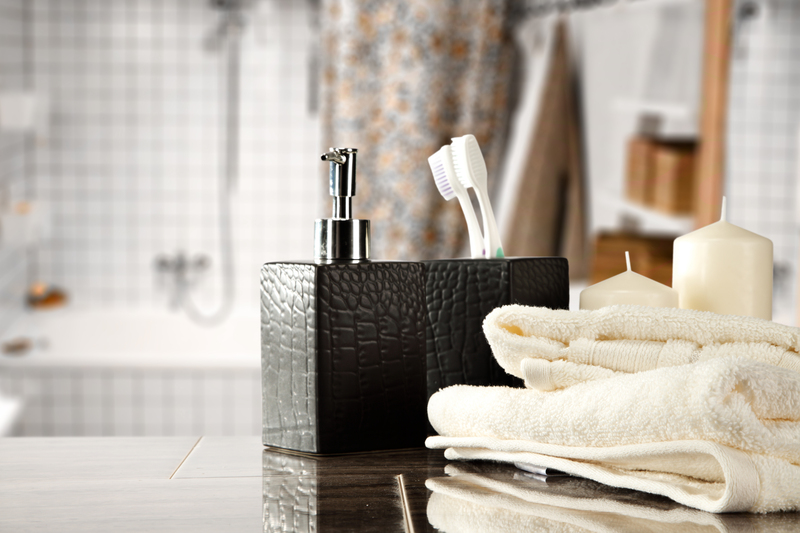Piano Moving: A Task Best Left to the Experts
Posted on 21/05/2025
Piano Moving: A Task Best Left to the Experts
Pianos are more than just instruments; they are family heirlooms, investments, and in some cases, priceless works of art. When the time comes to move a piano, many homeowners underestimate the complexity and risk involved. In this comprehensive guide, we'll explore why piano moving is a specialized job best handled by seasoned professionals, what goes into the process, the risks of DIY moves, and how to choose the right piano moving company.
Why Piano Moving Is Not a DIY Task
Despite their elegant appearance, pianos are deceptively heavy and cumbersome objects. Some upright pianos can weigh as much as 400-800 pounds, while grand pianos can tip the scales at over 1200 pounds. Aside from their weight, pianos are made of delicate internal mechanisms--moving just one incorrectly could result in expensive damage or serious injuries. Here's why piano relocation is not a job for amateurs.
The Anatomy of a Piano: A Fragile Marvel
- Delicate Strings and Action Parts: Pianos have thousands of moving parts. Mishandling can disrupt the tuning or permanently impair the instrument's sound.
- Heavy but Unbalanced: Unlike boxes or furniture, pianos have uneven weight distribution, making them hard to maneuver.
- Polished Finishes: Fine wood and glossy finishes are vulnerable to scratches, chips, and dents during transport.
- Size and Shape: Whether grand or upright, pianos are bulky and can be difficult to fit through standard doorways, halls, or stairs.

What Do Professional Piano Movers Offer?
Piano moving companies bring specialized expertise and equipment to each job. Professional piano movers understand how to disassemble, package, transport, and reassemble intricate instruments safely. Here's what you get when you hire an expert:
- Specialized Equipment: Piano dollies, heavy-duty straps, padding, and custom skids ensure safe movement of all piano types.
- Trained Personnel: Movers trained in the principles of piano transportation and lifting techniques dramatically reduce risk.
- Insurance & Liability: Reputable movers are insured against damages, providing peace of mind as your prized instrument is relocated.
- Transport Vehicles: Climate-controlled trucks maintain ideal conditions for pianos, preventing cracks and warps caused by sudden temperature or humidity shifts.
The Step-by-Step Process of Professional Piano Moving
- Assessment: The team evaluates the piano, measurements, the property layout, and identifies obstacles like tight corners or stairs.
- Preparation: The piano is carefully wrapped and cushioned to protect all surfaces.
- Disassembly (if needed): Legs, pedals or lids are detached on certain models to facilitate safe moving.
- Lifting and Loading: Using teamwork and lifting aids, the piano is securely placed onto a dolly or skid.
- Secured Transportation: Inside the moving truck, the piano is anchored and cushioned to prevent shifting during transit.
- Delivery & Placement: On arrival, the process is reversed, with careful reassembly and placement at its destination.
The Risks of Attempting a DIY Piano Move
Here's why choosing to 'do-it-yourself' when it comes to piano transportation can be risky and costly:
- Personal Injury: Back injuries, crushed fingers, and even broken bones are common when inexperienced individuals attempt to lift and move heavy pianos.
- Property Damage: Dinged walls, scraped floors, damaged doorways, or even broken staircases may result from improper handling.
- Instrument Damage: Pianos out of tune, cracked soundboards, and broken legs are just a few costly disasters that can occur.
- No Insurance: Homeowner's insurance rarely covers self-inflicted moving accidents. You'll be left paying for repairs or replacements out-of-pocket.
How to Find a Trustworthy Piano Moving Company
Choosing a qualified piano mover is crucial for your instrument's safety. Here's how to separate the best from the rest:
Key Qualities of Professional Piano Movers
- Experience: Look for companies with years of piano moving experience and specialized training.
- Proper Equipment: Ensure they use piano boards, dollies, and climate-controlled vehicles.
- Fully Insured: Verify their insurance coverage for both property and instrument damages.
- Positive Reviews: Read testimonials or ask for referrals from other piano owners or music professionals.
- Transparent Estimates: Get clear, itemized quotes--avoid movers who give estimates without a site visit or assessment.
Questions to Ask Before Hiring a Piano Moving Expert
- How many years have you specialized in moving pianos?
- Can you provide proof of insurance and references?
- Do you offer climate-controlled transportation?
- Will you handle all aspects including disassembly and reassembly?
- What steps will you take to protect my floors, walls, and doors?
Common Misconceptions About Piano Moving
False assumptions can lead to costly mistakes. Let's debunk the most prevalent myths:
- "Two Strong People Can Move Any Piano." Even the strongest individuals can't safely lift and transport a piano without training and specialized tools.
- "Casters Make Moving Easy." Piano casters are decorative, not designed for rolling the instrument over long distances or uneven surfaces.
- "It's Cheaper to Move the Piano Myself." Factoring in potential damage and injury, DIY moves ultimately cost more than hiring a professional.
- "Any Moving Company Can Move a Piano." Standard movers rarely have the necessary expertise or insurance to handle such valuable and fragile items.
Types of Pianos and Their Unique Moving Challenges
Each piano type presents its own unique obstacles during a move. Here's what professionals know that amateurs don't:
Upright Piano Moving
Upright pianos are tall, narrow, and surprisingly heavy. Their vertical design makes doorways and tight spaces challenging, and their weight distribution is often top-heavy, creating risks of tipping if not moved properly.
Grand Piano Transportation
Grand pianos (baby, full or concert) require partial dismantling. Removable legs, pedals, and lids must be packed and labeled correctly. The soundboard is especially vulnerable to cracking from sudden movements or environmental shifts.
Digital Piano Handling
While digital pianos are generally lighter, they contain sensitive electronics that can be damaged by shock or moisture. Expert piano movers ensure these components are protected with anti-static and water-resistant wrappings.
Antique and Specialty Piano Moving
High-value antiques and player pianos need even greater care. Specialized crates, extreme temperature controls, and "white-glove" handling are often employed.
Cost Factors in Professional Piano Moving
Wondering what influences the price of professional piano moving services? Here are the main contributing factors:
- Type and Size of Piano: Grand pianos cost more to move due to size, complexity, and dismantling required.
- Distance: Local moves are less expensive than long-distance or interstate relocations.
- Access and Obstacles: Stairs, narrow halls, tight turns, or uneven terrain increase labor and risk.
- Piano's Value and Condition: Antique or rare instruments may require more protective measures or insurance.
- Additional Services: Tuning, storage, and post-move repairs or assembly can add to the total bill.
On average, hiring a reputable piano mover is far more affordable than repairing or replacing a damaged instrument.
Tips for Preparing Your Piano for a Move
- Clear a Path: Ensure routes are unobstructed for easy access to and from the piano's location.
- Remove Accessories: Take off lamps, pictures, or anything resting on or near your piano.
- Inform Movers: Notify your movers about any fragile parts, quirks, or repairs made to the instrument.
- Secure the Environment: Control humidity and temperature before and during the move to protect the piano's wood and mechanical parts.

The Importance of Post-Move Piano Tuning
Piano moving can unseat the instrument's delicate balance, impacting tuning and overall sound quality. After every relocation, it's recommended to hire a technician for post-move piano tuning. Many professional piano moving companies can arrange this for you at an additional fee.
Conclusion: Leave Piano Moving to the Pros
Moving a piano is a complex task that combines physical strength, technical expertise, and meticulous care. While it may be tempting to save a few dollars with a DIY piano move, the risks to your safety, property, and the instrument itself simply aren't worth it. Professional piano movers have the know-how and equipment to ensure your instrument arrives at its new home safely and in perfect condition.
Piano moving is best left to the experts. Choose wisely, and your cherished instrument will continue to bring music to your life for years to come.
